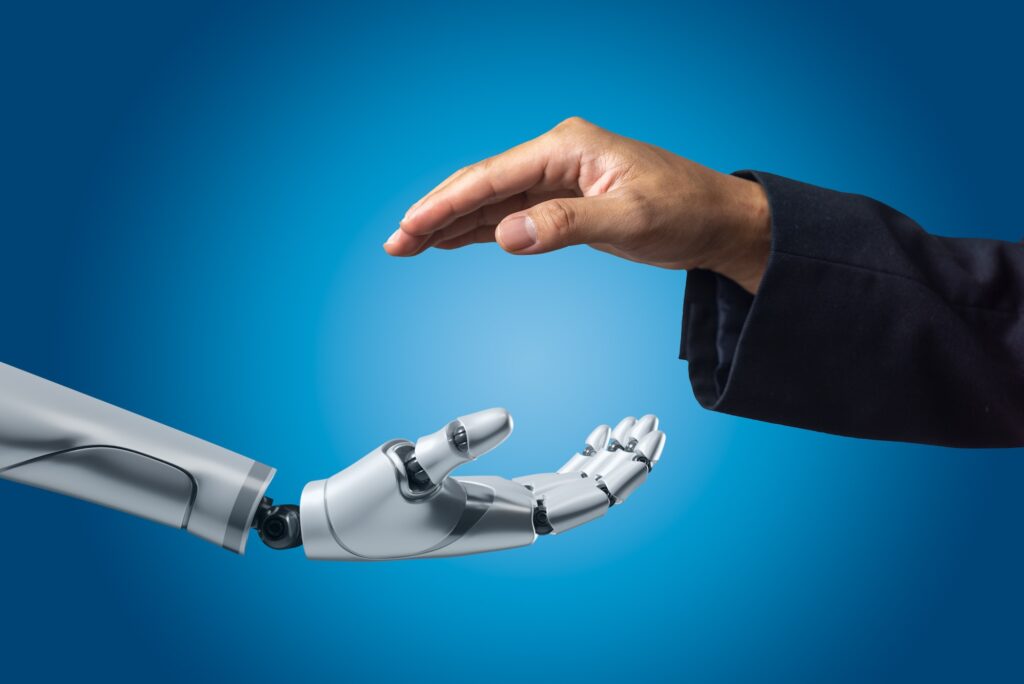Address
33-17, Q Sentral.
2A, Jalan Stesen Sentral 2, Kuala Lumpur Sentral,
50470 Federal Territory of Kuala Lumpur
Contact
+603-2701-3606
info@linkdood.com
Address
33-17, Q Sentral.
2A, Jalan Stesen Sentral 2, Kuala Lumpur Sentral,
50470 Federal Territory of Kuala Lumpur
Contact
+603-2701-3606
info@linkdood.com

We believe the world of artificial intelligence (AI) is full of exciting possibilities, but it also comes with some tricky challenges. Many people think of AI like a race, where the fastest team to cross the finish line wins. But, we think it’s more like what environmentalists and economists call a ‘tragedy of the commons.’ Here’s our take on AI and why it’s crucial we get it right.

Most people see AI as a competition, but we think this is too simple. AI is not a single technology that has just one ultimate goal. It’s a super flexible tool, like electricity, that we can use in many different ways. If we hurry to develop AI without thinking about its risks or how it might affect society, we could end up with problems we never intended.
‘The tragedy of the commons’ is a concept where lots of people can use a limited, valuable resource, but if everyone only thinks about their own needs, the resource gets used up and ruined.
In terms of AI, the ‘commons’ is our ability to handle the effects of AI without it causing major problems. Companies might say it’s pointless to slow down AI development because others won’t do the same. But if every company only thinks about its own benefit, the overall effect could be disastrous for everyone.

To solve the ‘tragedy of the commons’ issue, we can learn from political scientist Elinor Ostrom, who won a Nobel Prize in Economics in 2009. She came up with eight principles that can help us manage shared resources and avoid disaster. These can help us handle the challenges of AI:
We need to be clear about who is responsible for making decisions about AI. This group should include different people, like researchers, developers, policy makers, and ethicists. The more diverse, the better.
Rules for AI should find a balance between using it for good and protecting against risks. We need guidelines that promote responsible innovation but also prevent AI from being misused or abused.
All stakeholders affected by AI should be part of creating the rules. Including different perspectives helps make sure the decisions are comprehensive and ethically sound.
We need ways to watch and assess how AI systems are behaving and using resources. Regular check-ups can spot potential risks and let us step in before things get bad.
We need a system that punishes those who break the rules. If a company’s AI system causes harm, they should be held accountable. This can discourage reckless behavior.
Conflicts are bound to happen when governing AI. Having a good way to handle these is important to keep everyone working together.
Authorities should support the community’s right to organize and make their own rules. This encourages collective decision-making and responsibility.
Because AI brings up so many different challenges, we need different levels of decision-making. This allows us to make specific decisions while still following a broader framework.

Many of Ostrom’s principles are already being used in AI, but they’re not often linked directly to her work. For example:
By directly connecting these ideas to Ostrom’s work, we can use her principles more effectively and take a better approach to AI.
The way we talk about AI can shape our understanding and reaction to it. If we say AI is an “arms race,” it can make people feel pessimistic and rush into things. But if we say AI is like a ‘tragedy of the commons,’ we realize we can avoid disaster through teamwork and responsible management.
In the end, seeing AI as a ‘tragedy of the commons’ gives us a more thorough and detailed way to understand and handle AI’s challenges. By using Ostrom’s principles in AI, we can create a collaborative and responsible AI system that benefits everyone. Let’s navigate the complex world of AI with foresight, wisdom, and a commitment to the common good.

The ‘tragedy of the commons’ is a term from ecology and economics. It describes a situation where many people can use a limited resource, but if everyone only looks out for themselves, the resource gets used up and ruined. In terms of AI, it refers to how if every company only develops AI in their own interest, it could be disastrous for everyone.
We can prevent this by implementing principles for managing shared resources. These principles, developed by Elinor Ostrom, a political scientist, include clearly defining the community, balancing resource use and protection, involving all stakeholders, monitoring AI, enforcing rules and sanctions, handling conflicts, respecting the right to organize, and having multiple levels of decision-making.
Elinor Ostrom was a political scientist who won the Nobel Prize in Economics in 2009 for her work on how communities can manage shared resources. Her principles can guide us in how to manage AI, a shared resource, in a responsible and ethical way.
A diverse community of stakeholders, including researchers, developers, policymakers, and ethicists, ensures a balanced approach to AI development and deployment. By including all perspectives, we can create comprehensive and ethically sound rules.
In terms of AI, balancing resource use and preservation means finding a middle ground between utilizing AI for its potential benefits and protecting society from its potential risks. Guidelines should promote responsible innovation and prevent misuse or abuse of AI technologies.
AI presents a diverse range of challenges, and these challenges may require different solutions in different contexts. Having multiple levels of decision-making allows for nuanced decisions based on specific contexts, while still adhering to a broader framework.
Instead of viewing AI as an “arms race,” where the goal is to develop AI as quickly as possible, the ‘tragedy of the commons’ perspective encourages us to consider the societal implications of AI development. This perspective emphasizes the need for collective action and responsible governance in order to prevent potential catastrophic outcomes.